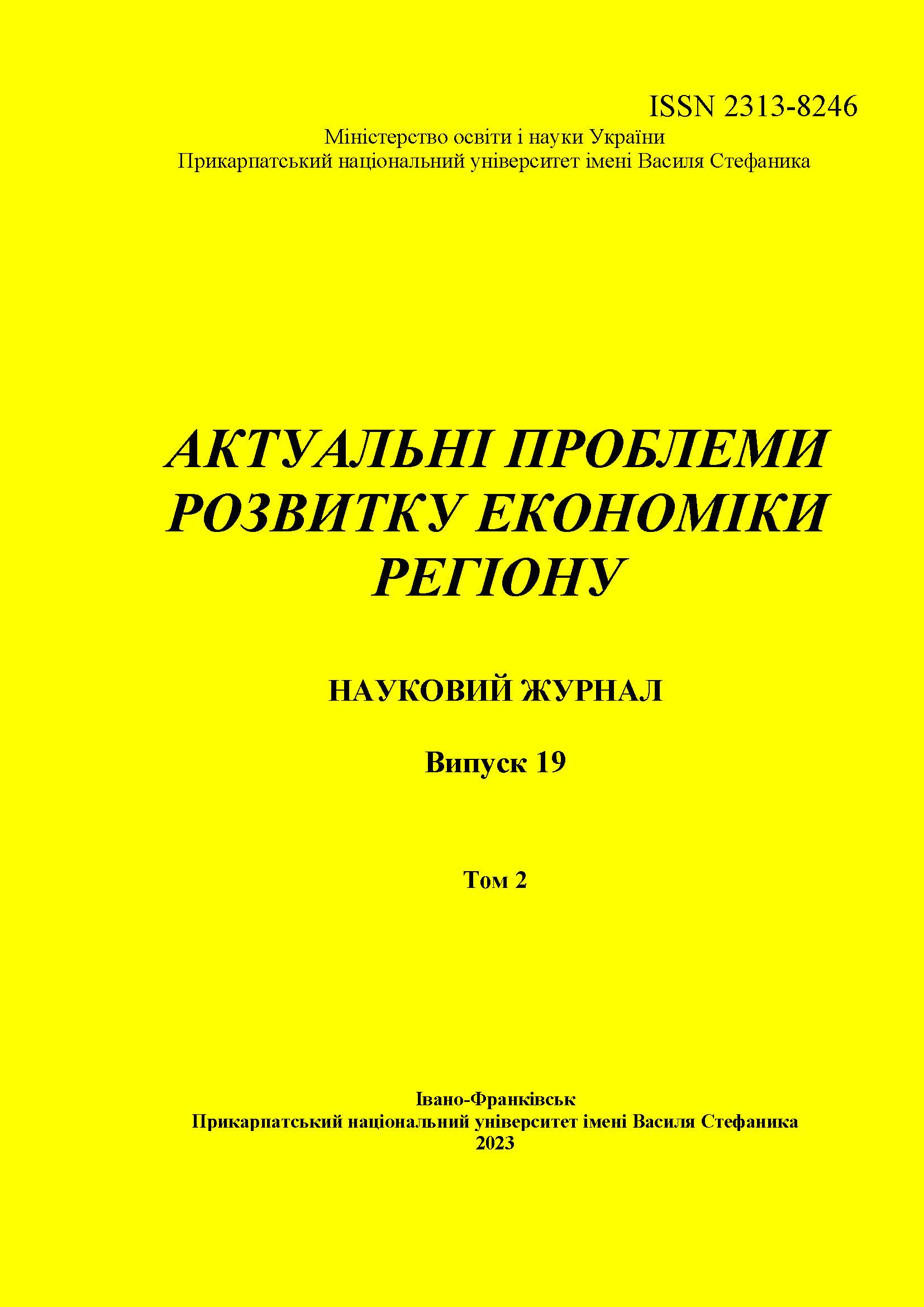ASSESSMENT OF THE INVESTMENT POTENTIAL OF NON-BANKING FINANCIAL INSTITUTIONS
DOI:
https://doi.org/10.15330/apred.2.19.143-159Keywords:
investment potential, non-banking financial institutions, market entities, macro- and microenvironmental factors, investment climate, investment attractiveness, assessment methodsAbstract
The article analyzes existing approaches to the assessment of the investment potential of market entities, which are determined by their role in the investment process: as an object of capital investment, as an investor, and as an entity that combines the functions of an investor and an object of capital investment. In accordance with this fact, the emergence of different types of investment potential is explained, namely «external», which corresponds to entities whose functioning and development depends on external sources of investment, «internal» - which refers to market entities capable of being an investor, and «aggregate», which corresponds to those market entities that combine the functions of attracting funds and investing them.
The macro- and micro-environment factors that form the components of «opportunities» and «resources» for all types of investment potential are singled out, while the macro-environment factors characterize the investment climate, and the micro-environment factors - the investment attractiveness of market entities. Thus, the factors of the external environment that determine the investment climate include the following: regulatory and legal field; the state of the investment market, the state of the financial and credit system, the state of currency regulation, the stability of the national currency, etc. And the factors of the internal environment that determine the investment attractiveness of a business entity include: the effectiveness of personnel management, financial resources, partnership relations, prospects for economic growth, etc.
The scheme for the formation and use of the aggregate investment potential of non-banking financial institutions (NFIs) has been developed, which shows the functional connections between external and internal investment potentials. The algorithm for assessing the investment potential of NFU is presented.
The presence of various methods of assessment of investment potential is noted. It is noted that today there is no single universally recognized method of assessing investment potential, there is no correct combination of qualitative and quantitative indicators of its assessment, which shows the need for further research into the specified problem.
In the process of research, it was established that the existing practice of assessing the investment potential of business entities, which combines the functions of attracting investment resources and investing them in other market entities, shows attempts to use various indicators of qualitative and quantitative assessment of investment potential in one methodology, which creates a problem their correct combination for a reliable assessment of the specified potential.
References
2. Vorsovskyy, A. L. “Theoretical and methodological basis of the investment potential of the enterprises.” Investments: practice and experience, no.15, 2007, pp.8-11.
3. Hovorun, Ya. V., & V. F. Hryshchenko. “Assessment of the investment potential of the region (on the example of Sumy and Khmelnytskyi regions).” Herald of Sumy State University, no.1, 2010, pp.153-161.
4. Dubyna, M. V. “The state and prospects for the development of the system of parabank intermediaries.” Scientific Bulletin: finance, banks, investments, no.3(8), 2010, pp. 52-57.
5. Yepifanov, A. O., etс. Administration of the region. Sumy, DVNZ «UABS NBU», 2008.
6. Yepifanov, A. O., etc. Assessment of creditworthiness and investment attractiveness of economic entities. Sumy, UABS NBU, 2007.
7. Zdrenyk, V. S. “Investment potential: the essence of the concept and assessment problems.” Scientific Herald of Uzhhorod University, no. 1(1), 2016, pp. 363-367.
8. Kobushko, I. M., & R. Yu. Chukhno. “Evaluation of investment potential of Ukraine taking into account infrastructure changes.” Visnyk of Sumy State University, no. 3, 2021, pp.102-119.
9. Korytko, T. Yu., & O.M. Kru. “Assessment of the investment potential of the enterprise.” Bulletin of the Donbas State Machine-Building Academy, no.2, 2015, pp.93-96.
10. Kukosh, M. S. “Assessment of the investment potential of the region from the point of view of the districts using the method of multidimensional scaling.” Intellect XXI, no.2, 2018, pp.144-150.
11. Lytiuha, Yu. V. “Assessment of the investment potential of the enterprise.” Strategy of economic development of Ukraine, no.20-21, 2007, pp.72-78.
12. Makukh, T. O., & T. O. Stechyshyn. “Investment potential as a factor in improving the efficiency of financial resources.”Finances of Ukraine, no.9, 2009, pp. 67-77.
13. Oleksandrenko, I. V. “Assessment of investment potential of regions.” Regional economy, no.3, 2009, pp.80-91.
14. Rudenko, O. A. “Methodological foundations of investment potential assessment: domestic and foreign experience.” Odesa National University Herald, no. 2(75), 2019, pp.45-49.
15. Tymoshchuk, O. M., & K. O. Horoshko. “The evalution and implemention system for investment potential of shipping companies of the inland water transport.” Investments: practice and experience, no.6, 2015, pp.18-21.
16. Turiyansʹka, M. M. Investment sources. Donetsk, Yuho-Vostok, 2004.
Downloads
Published
How to Cite
Issue
Section
License
- Authors retain copyright and grant the journal right of first publication with the work simultaneously licensed under a Creative Commons Attribution NonCommercial NoDerivs 4.0 Unported License that allows others to share the work with an acknowledgement of the work's authorship and initial publication in this journal.
- Authors are able to enter into separate, additional contractual arrangements for the non-exclusive distribution of the journal's published version of the work (e.g., post it to an institutional repository or publish it in a book), with an acknowledgement of its initial publication in this journal.
- Authors are permitted and encouraged to post their work online (e.g., in institutional repositories or on their website) prior to and during the submission process, as it can lead to productive exchanges, as well as earlier and greater citation of published work (See The Effect of Open Access)


